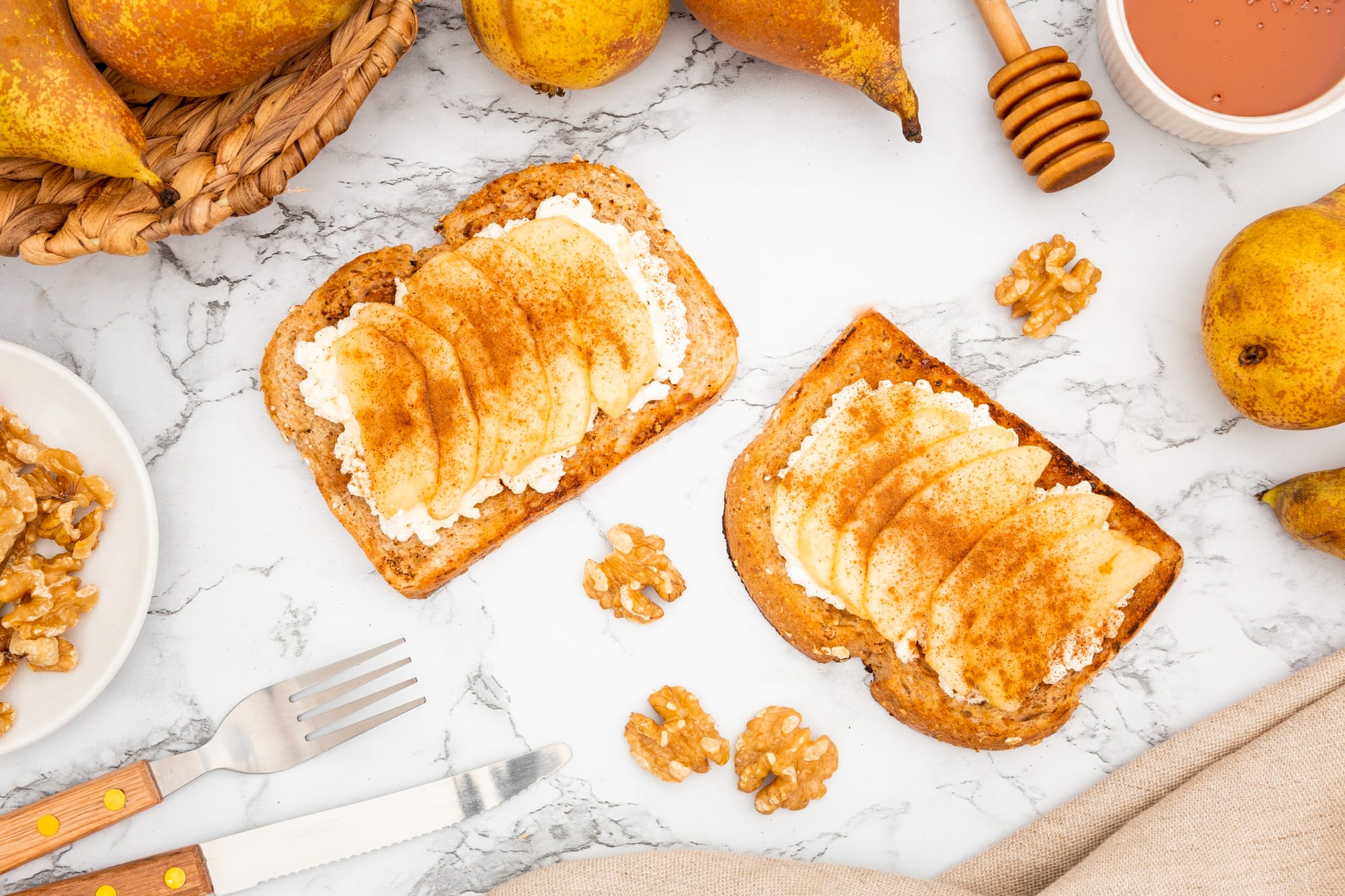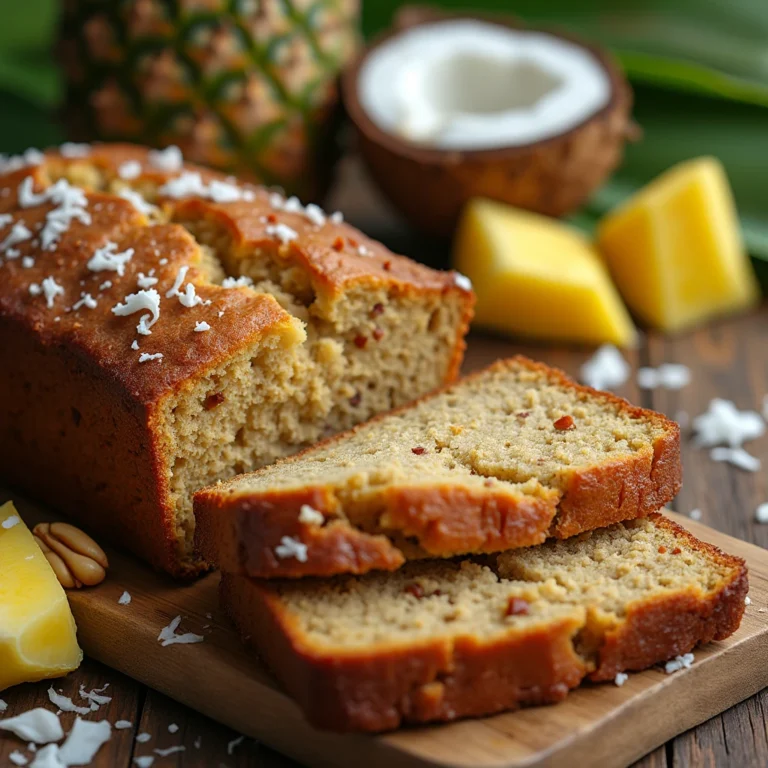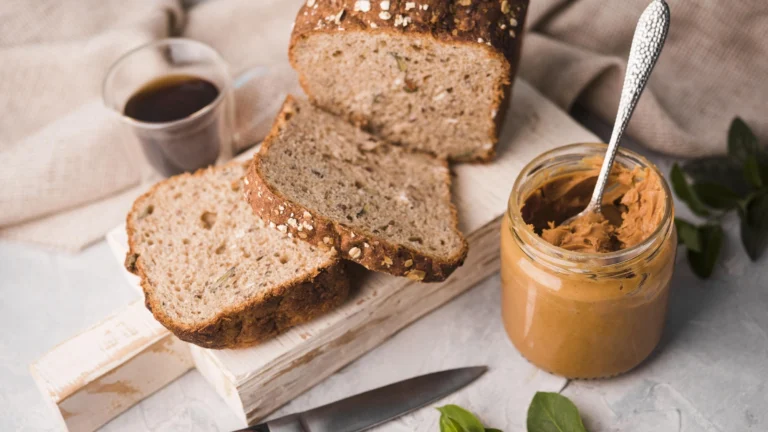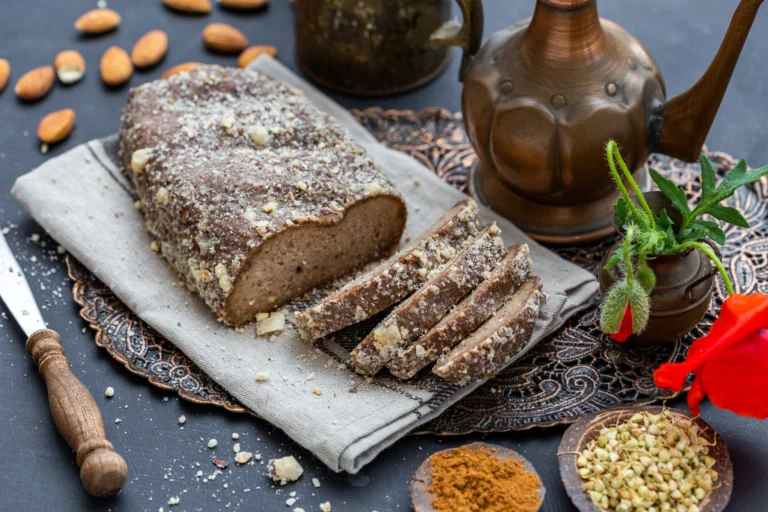How to Make the Perfect Pear Bread Recipe: A Deliciously Fruity Twist on Classic Bread
Table of Contents
A pear bread recipe offers something undeniably comforting, especially when the smell of freshly baked bread fills your home. When that bread is infused with the sweet, fruity essence of pears, it takes the experience to a whole new level. If you’re looking to make a delightful treat that’s perfect for any occasion, look no further than this pear bread recipe. Not only is it easy to prepare, but it also brings together the natural sweetness of pears with a soft, moist texture that’s sure to leave everyone asking for the recipe.
In this guide, you’ll learn how to bake the most delicious pear bread recipe, with tips, variations, and everything you need to make it just right. Whether you’re a seasoned baker or someone looking to try something new, this recipe is a guaranteed hit.
What Makes Pear Bread So Special?
There’s something about pear bread that makes it stand out from other quick breads. The key to its charm lies in its unique blend of flavors and textures, which makes every bite a little bit of heaven. Here’s why pear bread is so special:
- Rich Moisture from Pears: Pears are naturally high in water content, which means that they help keep the bread moist without making it heavy or dense. Unlike some other fruits, pears provide a gentle sweetness that doesn’t overpower the other flavors.
- Natural Sweetness: Pears are subtly sweet, which means you can reduce the amount of added sugar in your recipe without sacrificing flavor. The sweetness of ripe pears enhances the overall flavor of the bread, giving it a delicate yet satisfying taste.
- Versatile Texture: The addition of pears gives the bread a soft, slightly dense texture, with bits of pear scattered throughout each slice. This creates an interesting texture contrast, making it more enjoyable than your standard loaf.
In addition to these fantastic qualities, pear bread is incredibly versatile. It can be served as a dessert, a snack, or even as a hearty breakfast treat. Plus, it’s easy to make and pairs perfectly with a cup of tea or coffee.
Ingredients for the Best Pear Bread Recipe
To make pear bread, you’ll need a few basic ingredients, most of which you likely already have in your kitchen. Here’s a list of what you’ll need:
| Ingredient | Quantity |
|---|---|
| Pears (peeled, chopped) | 2-3 medium-sized |
| All-purpose flour | 2 cups |
| Baking soda | 1 tsp |
| Salt | ½ tsp |
| Ground cinnamon | 1 tsp |
| Ground nutmeg | ½ tsp |
| Butter (softened) | ½ cup |
| Brown sugar | ¾ cup |
| Eggs | 2 large |
| Vanilla extract | 1 tsp |
| Walnuts or pecans (optional) | ½ cup |
Notes:
- Pears: Opt for ripe yet firm pears for optimal results. Overripe pears may make the bread too soggy, while underripe ones can be bland.
- Flour: All-purpose flour is ideal for this recipe, though you might consider trying a gluten-free option if necessary.
- Nuts: While optional, walnuts or pecans add a lovely crunch and contrast to the soft, moist bread. If you have a nut allergy or prefer a smoother texture, you can simply leave them out.
Step-by-Step Instructions for Baking Pear Bread
Once you have gathered all your ingredients, you can begin the baking process. Just follow these steps, and you’ll soon have a delicious pear bread ready to enjoy!
Step 1: Preheat the Oven and Get the Pan Ready
Begin by setting your oven to 350°F (175°C) to preheat. As it heats up, grease a loaf pan with butter or non-stick spray, and then lightly coat it with flour. This preparation helps prevent the bread from sticking to the pan during baking.
Step 2: Mix the Dry Ingredients
In a medium-sized bowl, combine your dry ingredients. This includes the flour, baking soda, salt, cinnamon, and nutmeg. Stir them together to ensure that everything is evenly distributed. The cinnamon and nutmeg will add a lovely warm spice flavor to your bread.
Step 3: Cream the Butter and Sugar
In a separate large bowl, cream the softened butter and brown sugar together until the mixture is light and fluffy. This step is important because it helps to incorporate air into the batter, which gives the bread a lighter texture. For optimal results, use an electric mixer or a whisk.
Step 4: Add the Eggs and Vanilla
Then, add the eggs one at a time, mixing thoroughly, followed by the vanilla extract. Ensure the mixture is smooth and well blended. The eggs contribute structure and moisture, while the vanilla imparts a rich, aromatic flavor to the bread.
Step 5: Fold in the Pears and Nuts
Carefully incorporate the chopped pears, along with the walnuts or pecans if you choose to include them. Take care to avoid overmixing, as this can result in a dense texture for the bread. The pears should be spread evenly throughout the batter, ensuring that each slice offers a sweet, juicy burst of flavor.
Step 6: Combine Wet and Dry Ingredients
Gradually add the dry ingredients to the wet ingredients, mixing until just combined. It’s okay if the batter is a bit lumpy—just make sure everything is incorporated. Overmixing the batter will lead to a tough loaf, so be gentle.
Step 7: Pour into the Loaf Pan and Bake
Transfer the batter into the loaf pan you have prepared and use a spatula to level the top. Bake the bread for 60 to 70 minutes, checking for doneness by inserting a toothpick or cake tester into the center; it should come out clean. Keep a close eye on the bread during the final minutes of baking to avoid overbrowning.
Step 8: Cool and Serve
Allow the bread to cool in the pan for about 10 minutes before transferring it to a wire rack to finish cooling completely. This process helps the bread set, making it easier to slice. Once it has cooled, slice and serve.
Tips for Making the Best Pear Bread
- Use Ripe Pears: The best pear bread comes from ripe pears that are slightly overripe. This ensures they release plenty of natural sweetness and moisture into the batter.
- Don’t Overmix: Mix the batter just enough to combine the wet and dry ingredients. Overmixing will result in a dense, tough bread.
- Add Flavor Variations: Experiment with different spices like cardamom or ginger for a unique twist. You can also add a handful of raisins, dried cranberries, or chocolate chips for added texture and flavor.
Variations on the Classic Pear Bread Recipe
Once you’ve mastered the classic pear bread, you can try these variations to add a little something extra to your baking:
- Pear and Chocolate Chip Bread: Add ½ cup of semi-sweet chocolate chips to the batter for a decadent touch. The chocolate pairs wonderfully with the sweet pears and spices.
- Vegan Pear Bread: To make this recipe vegan, swap the eggs for flax eggs (1 tablespoon of ground flaxseed mixed with 3 tablespoons of water) and use a dairy-free butter substitute.
- Gluten-Free Pear Bread: Simply replace the all-purpose flour with a gluten-free flour blend. Make sure to check the flour’s instructions for any adjustments needed.
- Pear and Ginger Bread: Add 1 tablespoon of grated fresh ginger to the batter for a zesty, aromatic flavor that pairs beautifully with pears.
How to Store and Freeze Pear Bread
Once you’ve baked your pear bread, you’ll want to store it properly to keep it fresh for longer:
- Storage: Store pear bread in an airtight container at room temperature for up to 3 days. It’s perfect for slicing up and enjoying throughout the week.
- Freezing: To freeze pear bread, whether you have leftovers or are planning to prepare a batch in advance, start by wrapping it securely in plastic wrap. Then, add a layer of aluminum foil over the plastic wrap. This method will keep it fresh in the freezer for up to three months.
- Thawing: To thaw frozen pear bread, simply leave it at room temperature for several hours, or heat individual slices in the microwave for about 30 seconds each.
Why Pear Bread is the Perfect Holiday Treat
Pear bread isn’t just a great treat to enjoy on a regular day—it’s also a fantastic option for holiday gatherings. Its warm, comforting aroma fills the house as it bakes, making it the perfect addition to any festive spread. It also makes for a thoughtful gift. Wrap up a loaf and give it to a friend or neighbor, and they’re sure to appreciate the homemade touch.
Frequently Asked Questions About Pear Bread Recipe
Q: Is it possible to use other fruits in place of pears?
A: Yes! You can substitute pears with apples, bananas, or even peaches. However, keep in mind that different fruits have different moisture levels, so you may need to adjust the baking time slightly.
Q: Can I make pear bread without nuts?
A: Absolutely! If you don’t like nuts or prefer a smoother texture, simply omit them from the recipe. The bread will still be delicious!
Q: How can I make pear bread low in sugar?
A: If you’re trying to cut down on sugar, you can reduce the amount of brown sugar or use a natural sweetener like stevia or honey.
Q: Is pear bread hard to make?
A: Not at all! This pear bread recipe is beginner-friendly and perfect for anyone looking to bake something simple and delicious. If you can mix ingredients, you can make pear bread!
Conclusion: Enjoy a Slice of Pear Bread Today
Now that you know how to make the perfect pear bread, it’s time to get baking! Whether you’re enjoying it with your morning coffee, sharing it with friends, or gifting it to someone special, pear bread is sure to delight. With its moist texture, natural sweetness, and subtle spice, this recipe is perfect for any occasion.
Why not give it a try today? We’d love to hear about your pear bread creations. Share your experience, variations, and any tips you have in the comments below or on social media! Happy baking!








